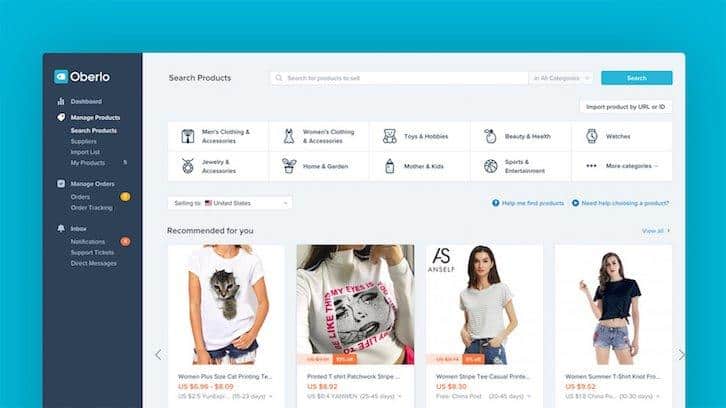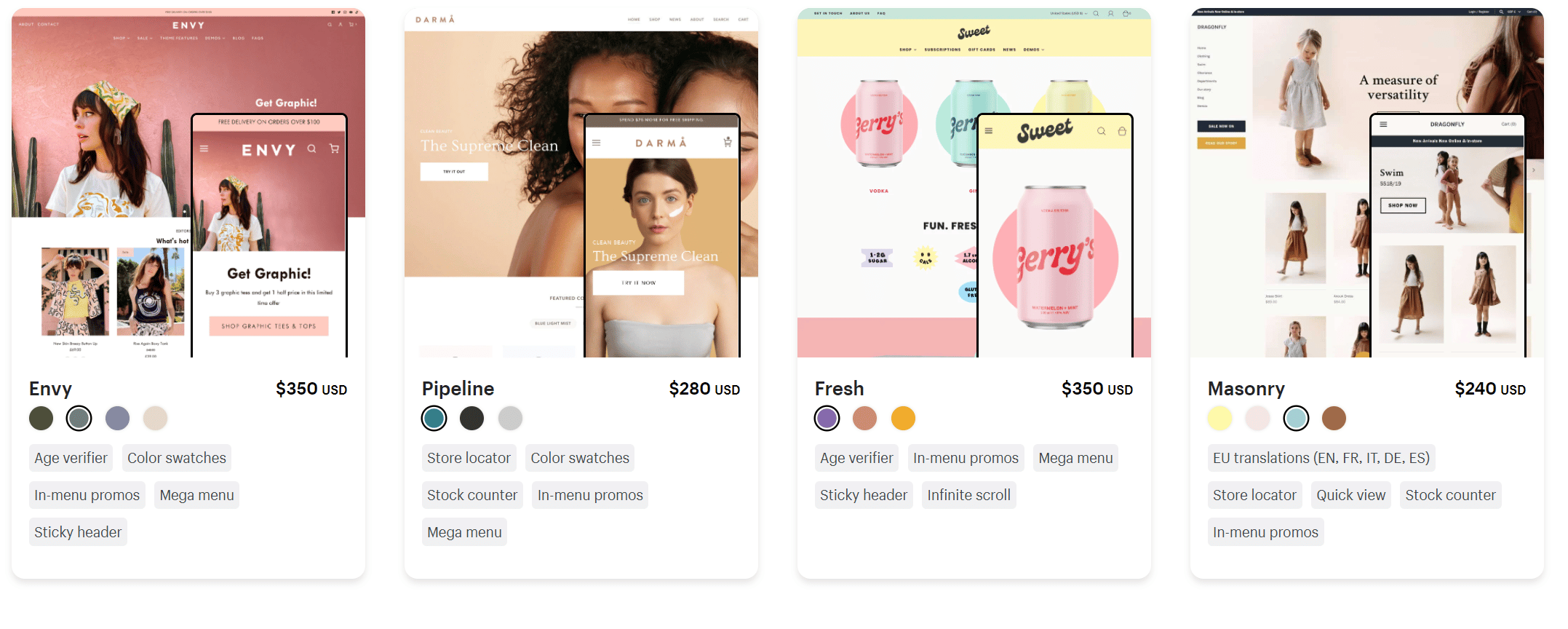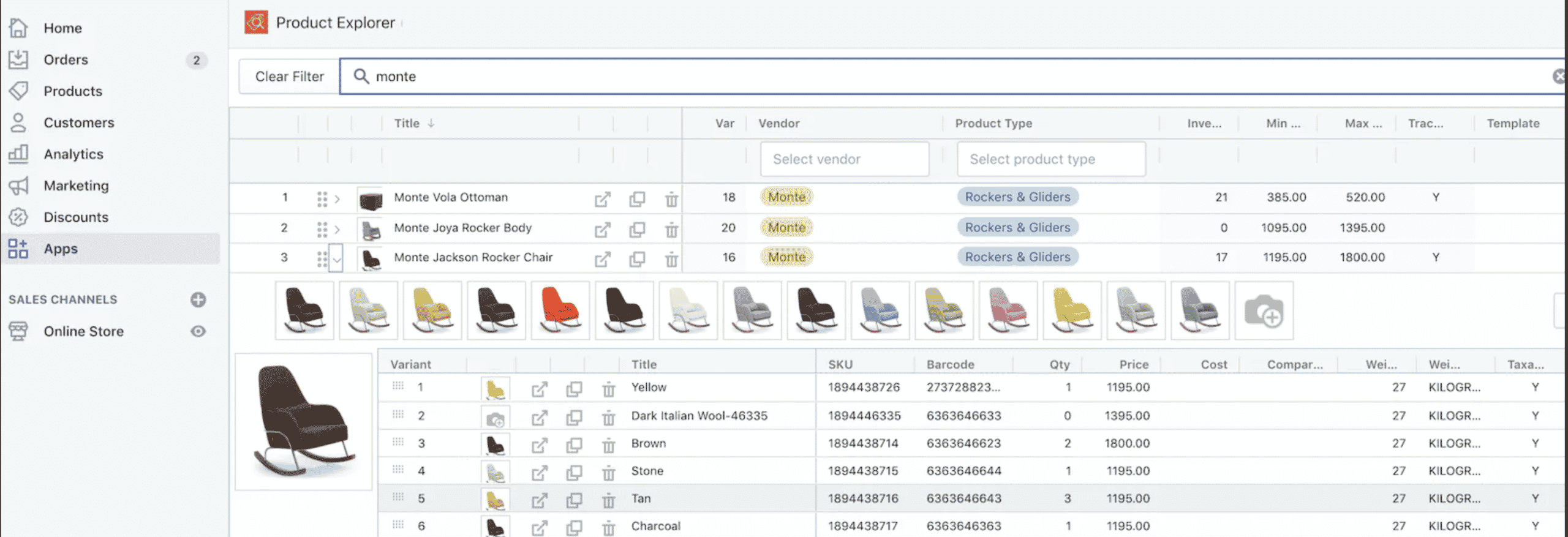
Is Shopify the right eCommerce platform for you and your online store? We’ll help you find out in this review that breaks down Shopify’s pros and cons, features, and pricing.
Want to learn how to create your own website and online store? Check out our list of the best online WordPress courses to get started.
What is Shopify?
When it comes to eCommerce platforms, you’ll be hard-pressed to find one more popular or feature-packed than Shopify. Thanks to its tons of apps and built-in features, you can use Shopify to build your own online store without any extensive tech skills, scale it, and build your brand while growing your bottom line. And while you can get a lot of sales directly from your Shopify store, the platform also gives you the power to sell through social media and other online marketplaces.
Pros and Cons of Shopify
Where does Shopify excel as an eCommerce platform and where could it improve? Let’s check it out now with these pros and cons lists.
Shopify Pros
Here’s a list of what we consider to be the benefits of Shopify for online store builders and web developers:
A massive app library: You don’t need to hire an expensive developer to give your online store all the bells and whistles you want, as Shopify integrates with over 3,000 third-party apps and extensions to extend the functionality of your place Sell on multiple platforms: There’s no need to limit your sales to just your store, as Shopify allows cross-platform selling that allows you to expand your reach through other sales channels like Amazon, eBay, Facebook, and Instagram. Lots of payment options: If your payment options are limited, you may lose sales. This won’t be a problem with Shopify as it has its own gateway (Shopify Payments) and supports over 100 other payment options. Tons of Templates – You can get started with Shopify’s impressive catalog of free and premium templates that eliminate the need to waste tons of time designing your site. Supports large stores: With Shopify’s robust inventory system and backend editor, you can scale and manage your online store without worry. Excellent Support – Even the smallest hiccup on the site could result in a significant loss of revenue. You can enjoy the peace of mind of Shopify’s 24/7 support should any issues arise.
reads: SEMRush SEO Tool Review
Shopify Cons
Here’s a list of what we consider to be Shopify’s downsides as an eCommerce and website building platform:
High transaction fees: Some of your profits could be swallowed by transaction fees if you decide to use something besides Shopify Payments to manage your store. Add in other payment gateway fees and you can experience sticker shock. Ease of use: The phrase “practice makes perfect” applies to the Shopify editor, as it can take some time to get used to, especially if you don’t have experience with similar software. Cost: On the surface, Shopify looks cheap. However, once you factor in transaction fees and the cost of using some apps, Shopify can eat up a good portion of your store’s monthly budget. Need for apps: Shopify’s extensive integration with apps is one of the platform’s strengths, but it’s also a weakness. Because? Because you may rely on many apps to get the job done, and some of them have separate costs.
Shopify Features
While the entire list of Shopify features is too long to list here, we’ll do our best to showcase the main features and highlights.
Ease of use
No matter how many functions Shopify has if they are too complicated to use. Fortunately, this isn’t a problem, as Shopify is, for the most part, easy to use, as long as you invest a little time to get used to it.
Shopify’s interface is simple and relatively straightforward. As such, even beginners shouldn’t have too much trouble finding their way around the platform. Setting up the basics of your online store shouldn’t be too difficult, although you probably won’t be up and running in less than 10 minutes. As long as you can get past the potential initial intimidation that comes with setting up your own online store, you’ll find Shopify easy to use and not as difficult as it sounds.
On the other hand, don’t be surprised if you’re a little frustrated when using Shopify at first.
A common complaint is that the interface can be cumbersome when switching between the front and back to change the layout, edit product screens, etc.
Themes

Shopify’s themes or templates look great and are varied enough that you can easily find the right one for your brand. Most importantly, they are highly functional and responsive, whether your customers are browsing your store from a desktop or shopping on the go using a mobile device or tablet.
And, if you want to modify a Shopify theme to suit your exact needs, you can, as they are customizable.
While each theme has its own set of features to draw your eyes to it, you can count on standard features like free updates, stock photos at no cost, different color palettes and styles, mobile-friendly , dropdown navigation, customizable content. sections and built-in SEO tools.
Product management

Shopify makes it easy to manage your products by:
An inventory management feature that allows you to update product lists, monitor orders and track stock levels. Quickly customizable product variations that differ in terms of color, size, material, weight, price, etc.
Payments
You can choose from over 100 payment gateways with Shopify to ensure your customers can purchase products without difficulty. To enjoy the lowest transaction fees and sell in multiple currencies, you should choose Shopify Payments.
Multi-channel selling
Shopify enables your store to reach its full profit potential by allowing you to sell through multiple online channels such as Amazon, eBay, Facebook and Instagram.
Digital sale
You don’t need a physical product to sell to make money with Shopify, as you can sell digital products and services through the platform once you install an app like Shopify Digital Downloads.
applications

Speaking of apps, if there’s a feature you want to add to your store, you can probably do it via an app. Shopify offers over 1,000 free and paid apps in its store to extend the functionality of your site.
Recovery of abandoned cars
One of Shopify’s main built-in features is abandoned cart recovery, which can encourage customers to make a purchase after they’ve left your site by sending them emails, offering them discount codes, and more. This feature alone can help you win back up to 15 percent of your customers. .
shipping
A fundamental part of e-commerce is shipping, and Shopify makes it as easy as possible through partnerships with UPS, USPS, DHL and more. Whether you want to change shipping rates or print labels, you can do it all using Shopify’s shipping features.
Analytics
Is your site performing to its full potential? Shopify’s reporting tools can give you that answer, so you can gain insight into your sales, customer retention rate, and more.
Email marketing
If you’re not emailing your customers, you could be leaving a lot of cash on the table. Shopify integrates with third-party email apps like Klayivo and Constant Contact so you can run this essential part of e-commerce.
We have a great tutorial that highlights some of the best email marketing tips.
SEO and digital marketing
Your store will not be successful if it is hidden in search engine results or poorly optimized. Shopify addresses this issue with a wide range of SEO tools to ensure your site is seen and placed in the SERPs so you can make sales.
Want to learn more about search engine optimization? Check out our SEO section for tons of digital marketing tips and tutorials.
Point of sale
Do you sell more in person than online? Use the Shopify POS app to accept in-store credit card payments, sell gift cards, and more.
drop shipping
If your store follows the dropshipping model, Shopify will suffice as long as you install one of their dropshipping apps like Oberlo or AliExpress.
taxes
You don’t need to be an accountant to run your online business, as Shopify can help with its built-in tax calculator.
How much does Shopify cost?
Shopify offers five price plans designed to meet different needs:
Basic: Gives you all the basics to create your store, process payments, and ship products for $29 per month. Shopify – Offers Basic features with added staff accounts and professional reporting to grow your online business for $79/month. Advanced: Brings you “the best of Shopify” while offering the lowest transaction fees and custom reporting. Starter – An alternative solution that allows you to sell products online using messaging apps and social networks for $5 a month. Shopify Plus – Another alternative solution designed for high-volume businesses looking for business power. It is by far the most expensive Shopify plan, priced at $2,000 per month.
Again, remember that the actual price of using these plans can vary greatly depending on your transaction fees and the number of apps you decide to use.
Looking for an eCommerce solution or online website builder other than Shopify? Check out our list of Shopify alternatives for more online store options.
Disclaimer: Vendors appearing on this page will compensate us through methods such as affiliate links or sponsored partnerships. This may influence how and where their products appear on our site, but sellers cannot pay to influence the content of our reviews. For more information, visit our Terms of use page.
[ad_2]
Source link




